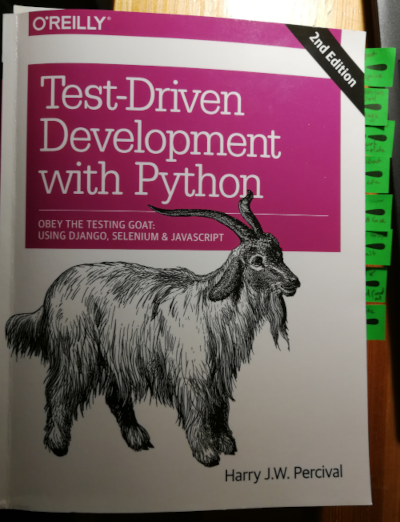Test-Driven Development with Python Revisited
Harry Percival’s Test-Driven Development with Python was a transformative book for me, so much so that I had to start a blog just to pay tribute to it. It has been almost nine years since the publication of the book, six since the second edition, and five since I was fortunate enough to read it. It was a ticket for the vehicle that took me from the happy hobby hacking to a much more rigorous land of professional software development.

As for someone who had not practiced Test-Driven Development before, the most valuable “Aha!” moment happened when the concept of spiking was introduced. I realized that all I had been doing until that point was just exploratory coding or spiking. That does not mean that spiking is bad, it is just not production-ready. You may think that in order to despike it, you should just add tests, but TTD says: “No”. The right thing is to write tests, and implement the same functionality again, step-by-step. Very often, the final test-driven code would be much better, because you have already thought through the problem at least twice, first time while spiking, and second time while writing the tests.
The scope of the book is much broader than just TDD, as the author took a holistic approach embracing all layers of the web development stack. Of course, Python and Django are the heart of it, but there is much more. Some layers are only touched (like rather minimalistic framework-less frontend javascript), or configuring an nginx server. Other tools are introduced quietly in the background. For example git version control is used through the whole book, and the proposed methodology is going beyond the basic use cases.
Far from being limited to Django testing, the book gently introduces elements of functional programming, practical use of decorators, and bits and pieces of devops. Deployment chapters are not limited to one or another platform as a service but go into lower level interaction with a server.
Levels of complexity are built up gradually. The reader is led by hand from naive basic solutions to more advanced Django. From running tests by hand to deployment of automation and Continuous Integration. All of that without jumping over intermediate steps and with proper explanation.
At all the stages it is clear that the book is about tests and testing and that is the subject covered thoroughly. All the topics touched in the book are there on purpose and all are covered to the extent required by the context. Nevertheless, the author is deploying traffic lights and road signs to the tangled streets of the city-maze of modern web development.
The other nice thing about the book is that it is not an enclosed garden, but at each step it is pointing to external sources and reference material, such as books, articles, and conference talks. It is opening doors to the world of disputes, controversies and clashing opinions related to software development and architecture best practices.
At the moment of the publication, versions of the packages used in the book were bleeding edge. As for today Python 3.6 and Django 1.11 are no longer exactly the versions one would use, but they are still very close to the current state of the technological stack, as both Django and Python are quite stable. Also, the author is working on the third edition of the book.
Even though I was reading the printed book, the fact that at the same time it was freely available online made the experience much easier in respect of following links, making notes and navigating around quite a big volume of dense material.
The lecture of the book made me follow the trail to where the author had opportunity to practice Test Driven Development, Pair Programming and Extreme Programming in general and I joined the company where the book was born.
After 2017, Harry wrote another book, this time about his experience with software architecture in another organization. Even a not very diligent reader could notice that his opinions had evolved. For those who would like to follow the evolution, I would recommend his Pycon 2020 talk about mocks.
As you see I am not adhering to the little style that I started my blog with. Truthfully, that post was written few years ago before I had that weird idea, but there are more little posts on the way. I hope that the gap between conception and completion isn't as wide as it was for this one.